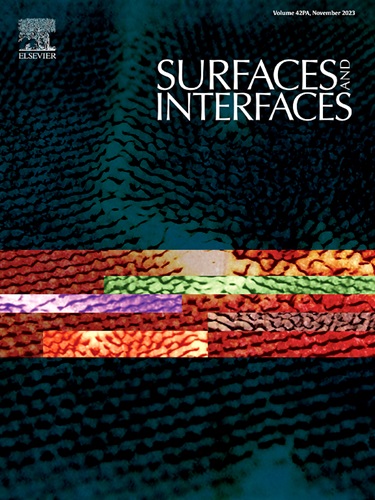Innovative zirconia surface activation via grit-blasting and post-discharge plasma pretreatment for covalent grafting of organosilanes
IF 5.7
2区 材料科学
Q2 CHEMISTRY, PHYSICAL
引用次数: 0
Abstract
Zirconia is a material of choice due to its superior mechanical properties, high biocompatibility, and excellent chemical stability. The development of durable and effective surface pretreatments for zirconia is essential for expanding its applications in biomedical and dental fields, as well as in areas such as supported catalysis and filter membranes. In this study, we introduce an innovative surface modification technique to improve grafting efficiency on zirconia substrates. This method involves a two-step process: an initial tribochemical pretreatment with glass beads, followed by exposure to an argon-dioxygen post-discharge. Comprehensive characterization of the treated zirconia surfaces was performed using X-ray Photoelectron Spectroscopy (XPS), Scanning Electron Microscopy (SEM), X-ray Diffraction (XRD), Raman spectroscopy, and colorimetric assays. The results indicated that the grafting ratio achieved with this technique is comparable to the most effective methods reported in the literature while micro-cracking and surface phase transition of zirconia typically induced by grit-blasting with commercial particles is limited. These findings suggest that this novel surface modification technique has significant potential for enhancing the durability of grafting on zirconia-based materials.

通过喷砂和放电后等离子预处理创新性地活化氧化锆表面,实现有机硅烷的共价接枝
氧化锆因其优越的机械性能、高度的生物相容性和出色的化学稳定性而成为首选材料。要想扩大氧化锆在生物医学和牙科领域以及支撑催化和过滤膜等领域的应用,就必须开发出持久有效的氧化锆表面预处理技术。在本研究中,我们介绍了一种创新的表面改性技术,以提高氧化锆基底的接枝效率。该方法包括两个步骤:首先用玻璃珠进行摩擦化学预处理,然后暴露于氩气-氧气后放电。使用 X 射线光电子能谱 (XPS)、扫描电子显微镜 (SEM)、X 射线衍射 (XRD)、拉曼光谱和比色法对处理过的氧化锆表面进行了综合表征。结果表明,该技术实现的接枝率与文献报道的最有效方法不相上下,而通常使用商业颗粒喷砂引起的氧化锆微裂纹和表面相变却很有限。这些研究结果表明,这种新型表面改性技术在提高氧化锆基材料接枝耐久性方面具有巨大潜力。
本文章由计算机程序翻译,如有差异,请以英文原文为准。
求助全文
约1分钟内获得全文
求助全文
来源期刊

Surfaces and Interfaces
Chemistry-General Chemistry
CiteScore
8.50
自引率
6.50%
发文量
753
审稿时长
35 days
期刊介绍:
The aim of the journal is to provide a respectful outlet for ''sound science'' papers in all research areas on surfaces and interfaces. We define sound science papers as papers that describe new and well-executed research, but that do not necessarily provide brand new insights or are merely a description of research results.
Surfaces and Interfaces publishes research papers in all fields of surface science which may not always find the right home on first submission to our Elsevier sister journals (Applied Surface, Surface and Coatings Technology, Thin Solid Films)
 求助内容:
求助内容: 应助结果提醒方式:
应助结果提醒方式:


